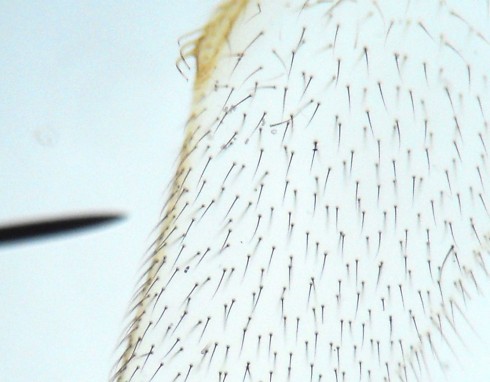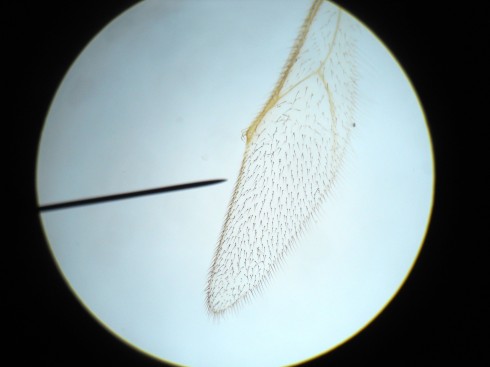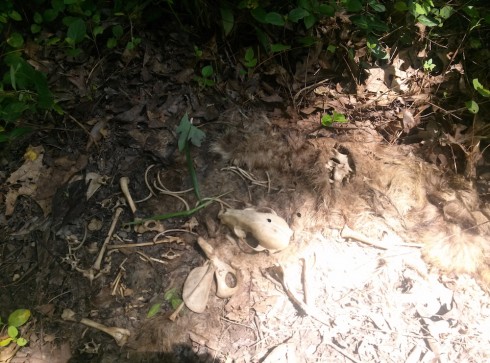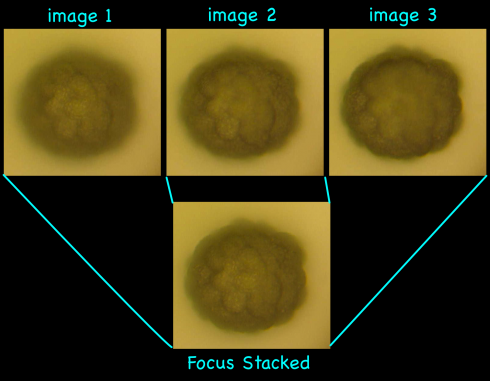Mic-UK has an excellent reference for microscopic life. It’s where I learned about Gastrotrichs.

Middle and High School … from a Montessori Point of View
Mic-UK has an excellent reference for microscopic life. It’s where I learned about Gastrotrichs.


Now that I have a few new microscopes, I’d like students to be able to make their own, permanent, slide collections. Walter Dioni has some superbly detailed pages on how to mount samples for microscopy. I could not find a good, up-front, index, so for the record, here are his pages on mounting slides:
Most of these methods use chemicals that are safe to work with (all are non-toxic), but using nail polish appears to be the easiest — it’s a mount and a sealant in one — so that’s the one I tried first, using a bottle of Strengthener, Nail Hardener. The Karo syrup, and glycerin methods also seem reasonably easy, and it may preserve some of the organic colors better so I may try those later when I have the time.

P.S.: Dioni also has a good page on pollen microscopy.
Inside Chris Gayomali’s interesting article on, “How typeface influences the way we read and think” is a bit about an undergraduate student who found that the font he used affected the grades he got on his papers. Turns out that some fonts, Georgia for example, are better than others.

P.S. As the article points out: don’t use Comic Sans.
While walking through the woods to recover the skeleton the other day, I picked up, or rather was boarded by, a few ticks. So when I got back to school I plopped them under the stereoscopes to try to identify them.

They were both lone star ticks (Amblyomma americanum): one adult and one juvenile.

Under the microscope, they were quite pretty with their very interesting red and black patterns.
Note:
Purdue’s extension service has an excellent reference page on basic tick anatomy and ecology for a lay audience, and Colonial Pest Control has a very readable overview of The Biology of Ticks (↬ Jay O.) that goes into their life cycles and how to deal with them.
Much greater detail can be found in the Tick Gross Anatomy Ontology, but the best reference I’ve found so far is the USDA’s Handbook (485): Ticks of Veterinary Importance (pdf). There you can find great anatomy diagrams and interesting biological and ecological information. One curious piece of information is that ticks can survive a long time (three years in one case) without a blood meal. It also includes some excellent diagrams:



Just out of the blue, I got a text from Maggie (Eisneberger) yesterday saying, “Wanna see something awesome. Bring the kids.” Well I didn’t have the kids with me, but I went over anyway. She and her niece had found an almost complete skeleton in the woods.
Since I’ll be teaching biology next year, I’ve been on the lookout for a good skeleton. The last time I had one was when my middle school class found a raccoon skeleton on an immersion trip. They brought it back to school, cleaned it up, and reassembled it on a poster board. It was an awesome learning experience.
This skeleton is even more complete. Even some of the cartilage between the vertebrae was dried out and preserved. It was a bit puzzling that the whole skeleton seemed to be there, and had not been too disturbed by scavengers even though, based on the state of decay, it had been there for quite a while.
We collected as much as we could, although some of the smaller bones in the hands and feet are quite tiny.
Maggie lent me her book on the animals of Missouri so I could try to identify it based on the teeth. However, later yesterday evening I got an email from her. She’d been talking to her brother, who’d, back in March, shot a raccoon that was going after his chickens. He’d left the body out in the woods.
Well now someone/s will have a nice little project in the fall.
There’s a tradeoff involved when you try to focus on things under a microscope. The higher the magnification the less you’re able to focus on at a time. Images 1, 2, and 3 in Figure 1 show a catalpa pollen grain under 400x magnification. In each image the microscope is focused slightly differently to bring a different level of the pollen grain into focus.

I tried two methods for doing the image stacking. The first was with the command-line programs in Hugin Tools, while the second was by hand using GIMP.
The method for focus stacking with Hugin Tools is described here by Patrick David and here by Edu Perez. It requires two commands, one to align the images, because focus-stacking requires very well aligned images, and another to stack them together.
Align the images using align_image_stack:
align_image_stack -m -a als_ catalpa-c[123].tif
This command takes three image files (catalpa-c1.tif, catalpa-c2.tif, and catalpa-c3.tif) and produces three aligned images prefixed with “als_” (als_0000.tif, als_0001.tif, and als_0002.tif).
The images are stacked together using enfuse (details here).
enfuse -o catalpa-pollen-out-b.tif --exposure-weight=0 --saturation-weight=0 --contrast-weight=1 --hard-mask --contrast-window-size=9 als_000?.tif
which produces an output file called catalpa-pollen-out-b.tif.

Focus-stacking with GIMP requires opening all the files as layers and adding transparency masks to the layers to leave behind just the areas that are in focus. The general method is shown in this GIMP tutorial.
Aligning images by hand and then selecting the areas to cut out can be quite tedious.

Two key things to keep in mind are:


NASA’s Spot the Station website tells you when and where to look to see the space station.

Impressive footage of a storm near Booker Texas, by Mike Olbinski.